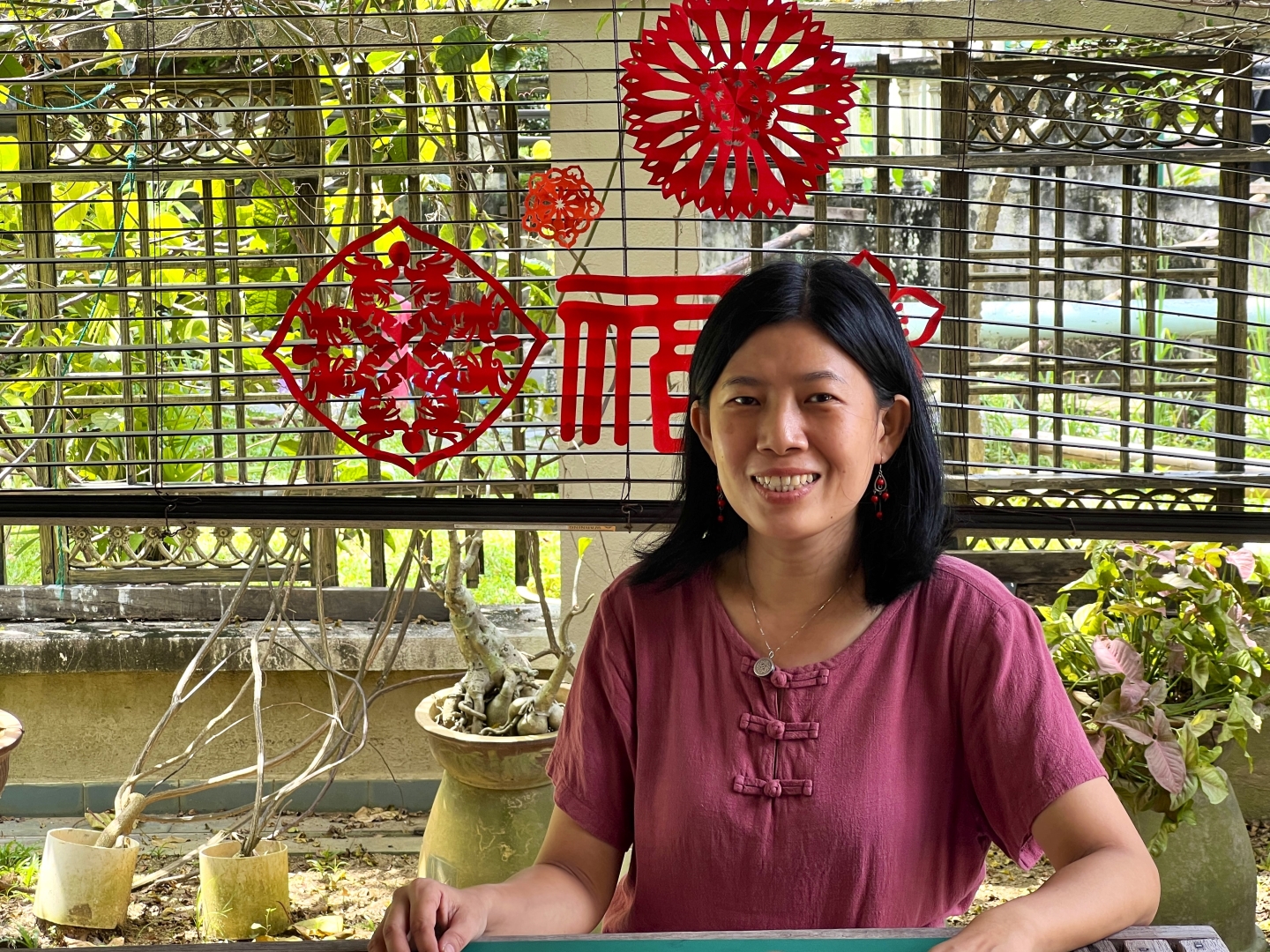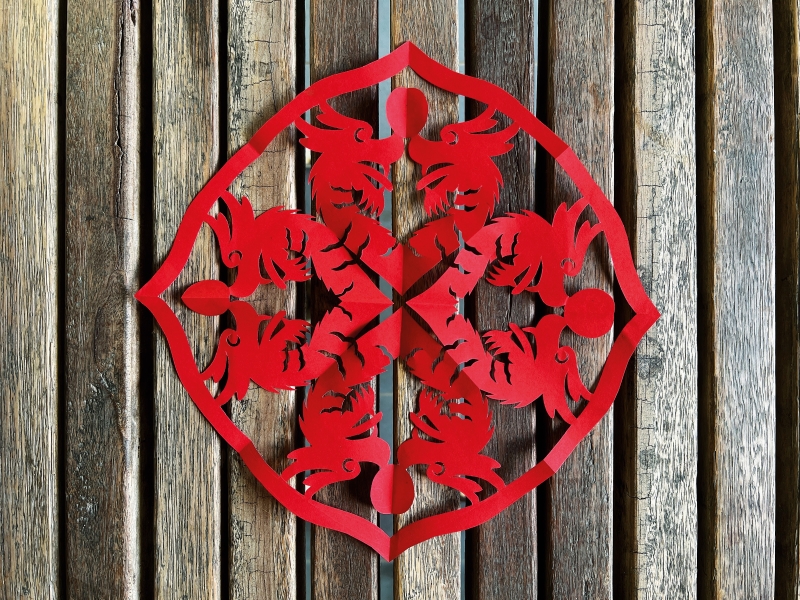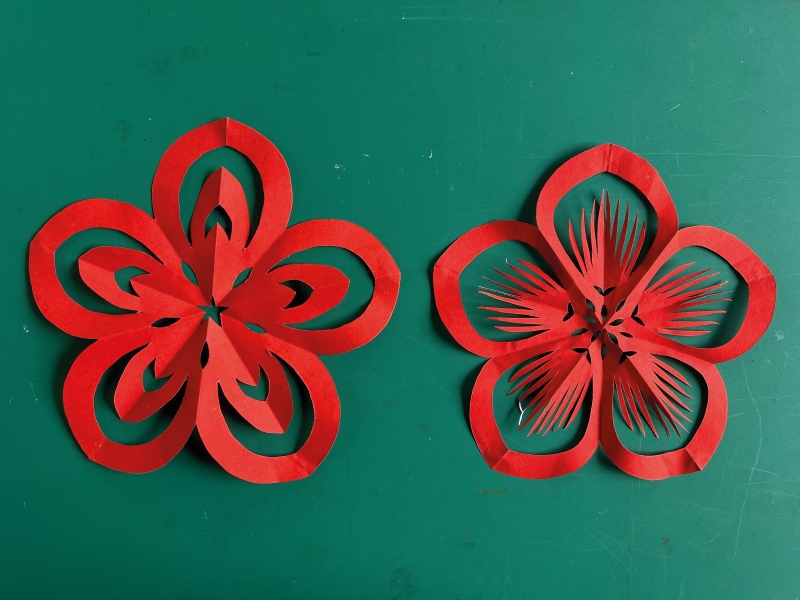
Low's classes are designed for adults and children alike (All photos: Aireena Azni/ The Edge Malaysia)
Those celebrating Chinese New Year are looking forward to the festival to spend time with loved ones. Parents, children and grandchildren congregate for communal activities such as shopping, cooking, cleaning and decorating their homes to welcome the Dragon. It is time for family reunion, and everyone gets ready to let go of the bad and the old.
One of the things Low Thuan Yian anticipates during this season is paper cutting. An ancient art form that originated from China, Chinese paper cuts have been traced back to more than a millennium. They appeared as early as during the Northern and Southern dynasties and became popular during the Tang Dynasty, when paper became more accessible to the masses.
“It’s quite a common activity before Chinese New Year. More than a decade ago, my friend taught us to make paper cuts. I would ask her ‘how can I make this?’ because it did not look easy at all. So, she drew some patterns and showed us how to cut.”
Slowly, Low developed a deeper interest in the craft and began taking up professional classes to master it. “At first, it was intimidating because I was not a creative person. I did not know how to draw. So, I thought it was impossible for me to do it.”
That is what most people fear when they think about trying paper cutting, she notes. But like any other handicraft, practice makes perfect.
“You have to keep doing it until you get used to the process. It’s not about drawing complicated designs, but folding and cutting the paper the right way,” Low says.
“It challenges critical-thinking skills because we have to know where to staple the folded paper so it does not get in the way when you cut the material. We also need to figure out how to penetrate and remove the middle part of the paper. I would say the most important quality to have for this art is patience.”
img_2674.jpg

Low, 43, has been teaching paper cutting since 2016 under the Yian Papercut label. She normally conducts workshops at her rented space in Klang, where she also sells traditional Chinese goods and reading materials sourced directly from China. On weekends, she joins pop-up markets across the Klang Valley or holds online sessions. Sometimes, she receives invitations from corporations and schools to organise creative classes for office workers and students.
Paper cutting may be an ancient art, but it is not difficult to learn, Low affirms. The tools needed include a pencil, ruler, hong zhi or xuan zhi paper — which can be bought from religious goods stores and is also used for calligraphy — stapler and scissors. Low usually begins her work by folding the red paper according to the angles or parts needed, then drawing motifs on one side before securing the piece with a stapler to ensure an even cut.
She indulges in many books and other reading materials on the topic to acquaint herself with paper cuts. As such, most of her patterns are drawn from sources that she finds interesting and have profound meaning related to Chinese culture. Some of the common motifs are characters symbolising happiness, good luck, health and wealth as well as flowers such as plum blossoms, chrysanthemums, peonies, lotuses and orchids.
“Chinese paper cutting is more than just art; it is part of the culture. I want people to know the positive values of our culture through this craft. It’s good that my classes are not limited to drawing and cutting papers because those can easily be learnt on YouTube,” she says.
“For example, I want people to know why certain symbols are used for Chinese New Year and the meaning behind specific motifs. It will make the lesson more interesting and valuable.”
History has shown that women were more involved in creative endeavours than men. It was no different for paper cutting, which was predominantly pursued by women in the countryside. Back in the day, parents would judge whether a girl was fit to marry their son by looking at her artistic abilities. For instance, the intricacy of her needlework or embroidery piece would highlight her capabilities in managing housework and keeping things in order.
“Women would usually stay at home to do house chores or go out to the paddy fields, and paper cutting was an activity they did during free time. So, the designs were mostly inspired by their surroundings and what they saw in their daily life. They did not really go to school to learn this. The knowledge would be passed down to daughters, but rarely sons.”
Over time, men picked up the skills and some were even recognised as masters, such as Yongshou Zhang and Wang Zigan.
img_2679.jpg

Although Low does not think of paper cutting as a dying art because “we still see them in our daily lives”, her ultimate goal is to spread awareness of this craft to more people across generations, as she observes that many do not have the opportunity to learn the craft at a young age.
“I often ask participants whether they have done paper cuts before. Most say it is their first time, and some are already in their 30s or 40s. It is not a compulsory subject in school; so, it depends on the teacher whether he or she will include the activity in the craft subject.”
It has been scientifically proven that art can help improve mental and physical health. “People try many forms of art to help them cope with stress. They seek something that requires a maximum level of concentration; so, they don’t think about what’s bothering them and focus only on what’s in front of them. I was thinking I could push paper cutting as an activity for relaxation.”
The craft is not limited to the festive season. The paper cuts can be used all year round as decor and displayed on doors, walls or windows for occasions such as weddings, birthdays and ceremonies or prayers to ward off evil.
Low encourages parents and children to incorporate the activity into their daily lives because it can especially enhance fine motor skills and creativity.
“Parents and teachers often tell me that, nowadays, children struggle with fine motor skills because they use only one finger to scroll through phones or tablets. So, it seems like they lack muscle strength in other parts of their hand. Some parents are too protective and do not let their children use this and that for safety reasons, but paper cutting trains the coordination of the hand, eye and brain.”
She hopes that Chinese paper cut art will still be relevant for decades to come. “I want it to be so prevalent in Malaysia that in the next few years, when I ask the question, ‘Have you tried paper cut before?’, many young people will say ‘yes’.”
For more information about Yian Papercut’s workshops, call (012) 611 6095.
This article first appeared on Feb 5, 2024 in The Edge Malaysia.


